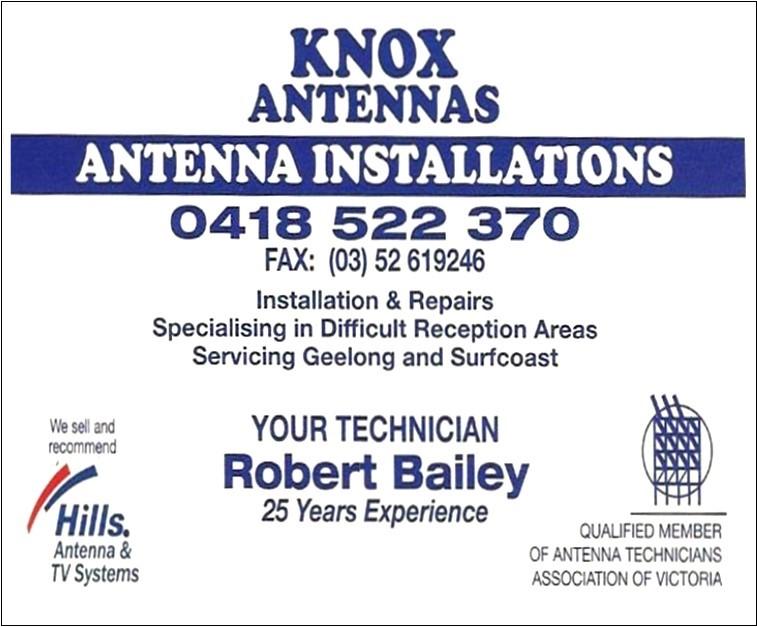
7 minute read
History spot
By Jan Morris, Anglesea and District Historical Society
It was 1851 and one of the most terrible fires Victoria has ever known. A quarter of Victoria, including Aireys Inlet was burned. Thomas Carter was devastated. He had recently finished building himself a wooden house, sheds and post and rail fences on the property known as Anglohawk, which later became known as Angahook. Carter had bought the squatting rights in 1846 from Lieutenant James Moore Cole Eyrie, the original 1842 selector. This squatting run was 7,000 acres and had a 10-mile sea frontage. Thomas Carter had taken great pride in making essential improvements to the property, but the 1851 Black Thursday fires had destroyed everything, including his vision for himself as a landholder. He put the property up for sale at a ‘fire sale price’. Thomas Pearse was a butcher in Moorabool Street, Geelong. He had been looking for somewhere to graze cattle and breed horses. There was money in breeding horses for the government. Taking his young apprentice Robert McConachy as his partner, Thomas was able to finance the purchase. The apprentice partner was financed by his father Thomas McConachy. Pearse had a wife and five young children. He couldn’t just move to Angahook where there was no house, no neighbours and no roads. Robert McConachy was single though and he could go to Angahook and build himself a hut from local materials, thus fulfilling the conditions of the squatting lease that someone must live on the property. Using local iron bark poles, the two bark huts he built were clad with sheets of local stringy bark. The hut he lived in was used as a family home for many years. The original bark chimney was replaced by a brick chimney as the open fireplace was used for cooking. The family left Aireys Inlet in 1872 but continued to come and stay in the bark hut for summer holidays for many years. The hut stood for 131 years until destroyed by the 1983 Ash Wednesday fires. The bark hut was designated No. 269 in the Register of Historic Buildings under the Historic Buildings Act 1974. The National Trust and the Barrabool Shire Council restored the hut in 1979 by renewing many of the timber supports and placing new bark cladding over the remaining original bark. The area around the hut was fenced and the hut furnished with items appropriate to the era. The hut was regularly opened for inspection and became a tourist attraction until it was destroyed in the fires of February 1983. Some McConachy and Pearse descendants decided to rebuild the hut. Using local materials and old-fashioned tools they meticulously followed the plans held by the National Trust and reconstructed the hut. The Shire paid expenses from insurance money and the descendants used their local knowledge and skills to rebuild the hut that had once been home to their grandparents. Both Pearse and McConachy families were represented, as in 1861 Robert McConachy had married Sarah Pearse, daughter of Thomas Pearse. Robert and Sarah had 15 children – the first three were born while they were still living in the bark hut. The rebuilt bark hut stands today at 10 Inlet Court, Aireys Inlet and is surrounded by grass and picnic tables and a children’s playground. Inside the hut there is a lot of information about Angahook and the surrounding area –it is certainly worth a visit.
Advertisement
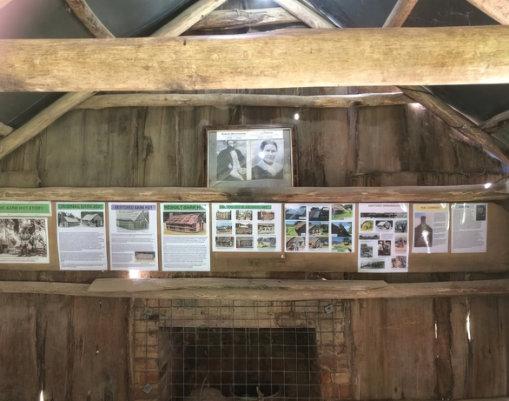
Twitchers’ Corner
Written and illustrated by Kaye Traynor
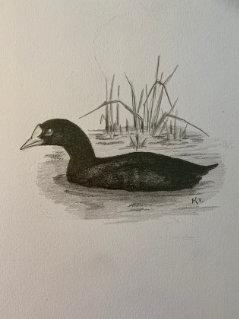
Eurasian Coot
Fulica atra Other names: Coot, Australian Coot Wing 174–190mm Bill 27–30mm Wt 480–650gms The Eurasian Coot is a widespread and common waterbird found in aquatic habitats – usually freshwater and brackish lakes, swamps, temporary inland waters and sometimes sheltered coastal inlets. Coots feed both in the water and on land, gathering and pecking at various kinds of vegetation, leaves, shoots and stems of plants – mainly vegetable matter, but occasionally insects and water snails. In the water they peck at plants or dive and bring up weeds, which they sort before eating. They can dive to depths of up to seven metres and remain underwater for up to 13 seconds. They can often be found in the company of swamp hens, moorhens, ducks etc. and are easily identified by their blueblack plumage and white forehead, shield and bill. Legs are blue-grey; toes have flattened lobes, which assist with swimming and diving; eyes are red. Mating displays on open water involve pursuit and calling, striking the water with their wings, mutual feather-nibbling and greeting postures, which may strengthen the pair bond. During this time they can be aggressive to other species and sometime kill ducklings and young grebes. Breeding can occur at any time of the year when conditions are suitable – most commonly August to February. A nest is constructed from swamp vegetation, sticks, grass and lignum on the bottom in shallow water or on a low island, stump or log. Six to 15 eggs are laid. Eggs are sandy-grey to bright clay-coloured, thickly and uniformly covered with grey-violet speckles and spots; oval with pronounced blunt and pointed ends, 52 x 35mm. The downy chicks have an orange-red head and black-flecked down on the rest of the body. Coots are capable of sustained flight, rising slowly from the water pattering their feet along the surface before taking to the air, flying with neck and legs outstretched. They will often fly at night, presumably to avoid falcons and other birds of prey. References: Menkhorst P, Rogers D, Clarke R, Davies J, Marsack P, Franklin K 2019 The Australian Bird Guide, CSIRO Publishing. Morcombe M, 1986 The Great Australian Birdfinder, AbeBooks.com.
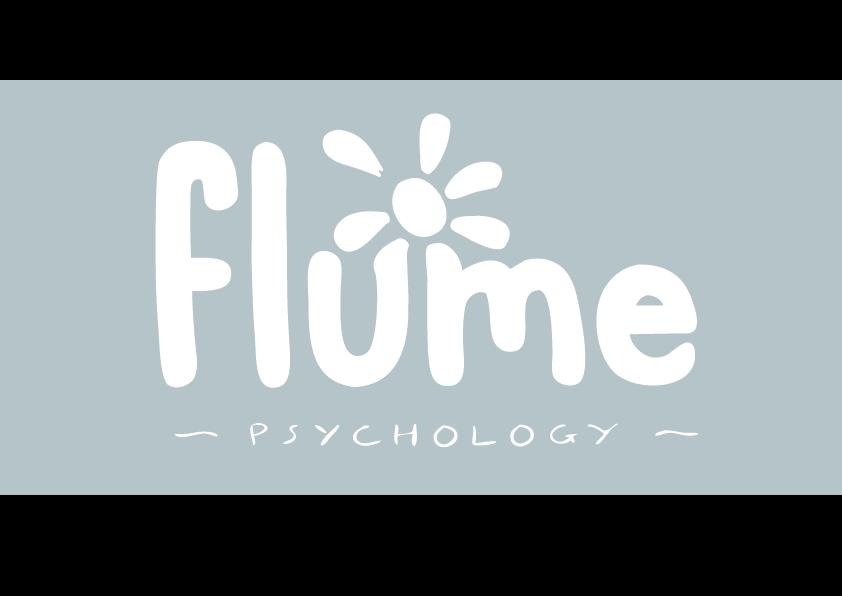
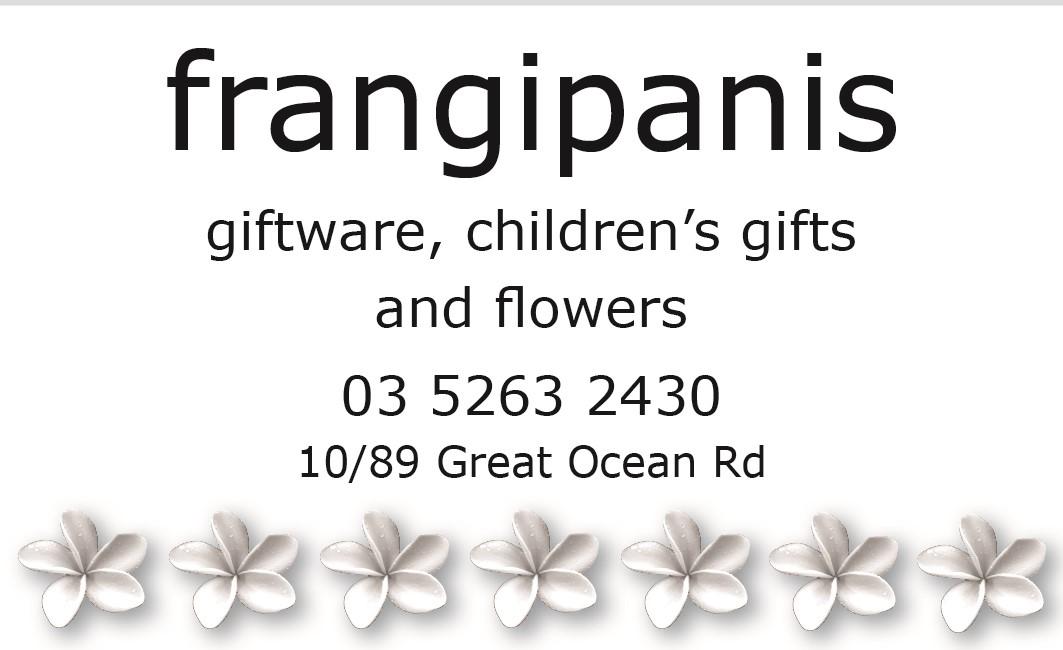
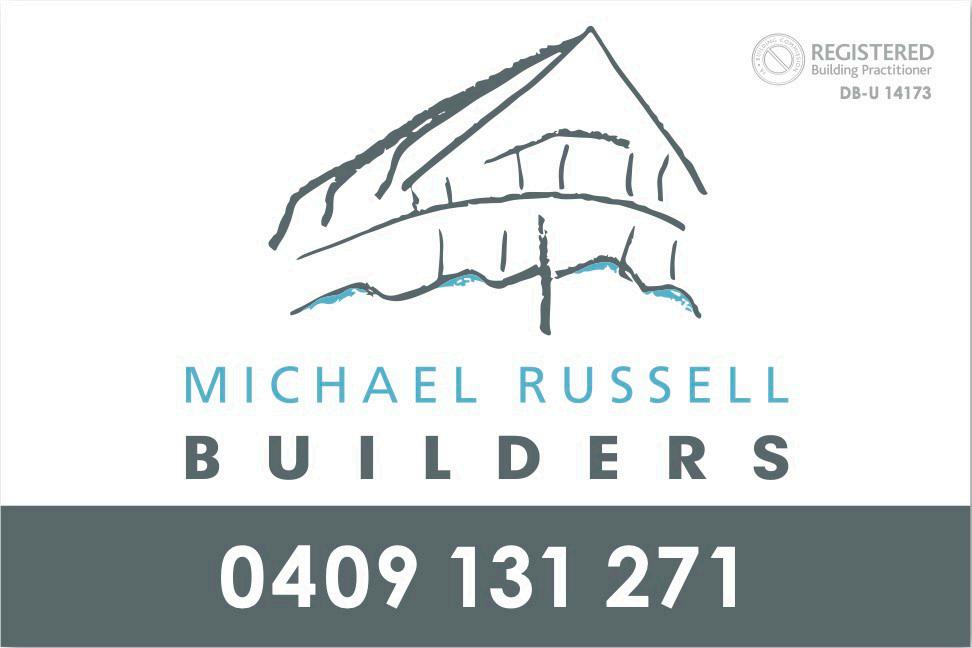

MATT PENNELL | Clinical Psychologist
www.flumepsychology.com.au 87-89 Great Ocean Road Anglesea
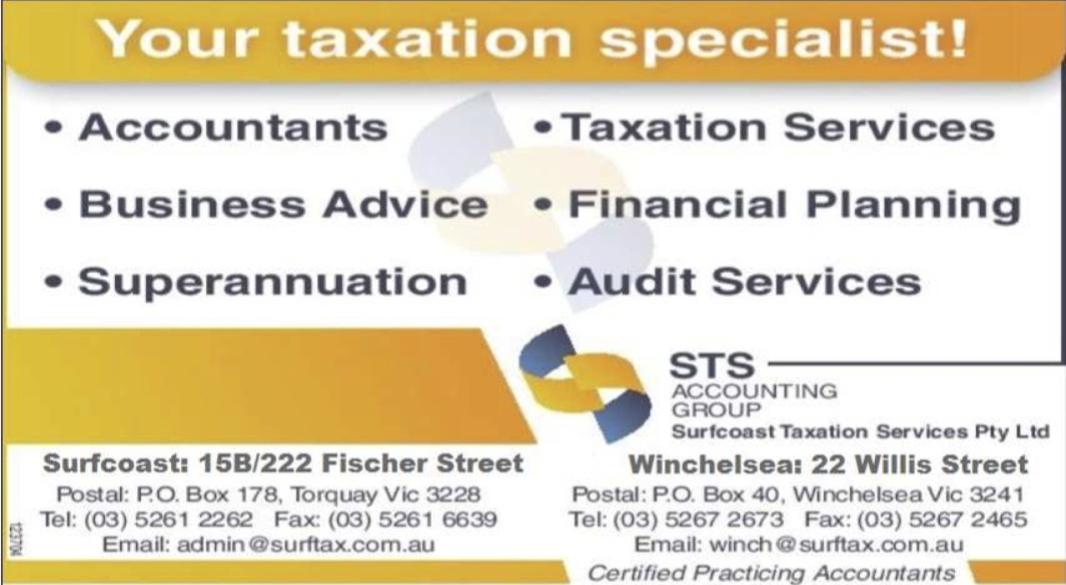
By Mike Bodsworth, Anglesea Ward
When people ask me, ‘how are you finding it on Council?’, I always mention the variety. Variety brings a lovely spiciness to life as a councillor. I feel privileged to be involved in such a wide range of issues and grateful for the varied capabilities brought by fellow councillors. One opportunity I’ve been excited to take up is a Circular Economy course, run by the United Nations. Circular Economy (CE) is a bit hard to define … it’s the opposite of the linear economy of ‘take, use, throw away’. CE recognises that resources are limited and we need to get maximum value out of the things we use and make, that waste must be used productively and products must be designed and built for longevity and ease of repair, repurposing or recycling. There are heaps of local examples. Anglesea’s ‘tip shop’ diverts items from landfill, provides bargains for thrifty shoppers and supports local community groups. Repair Cafe Surf Coast gives items a longer life, reduces consumption and waste and saves owners money. Plus op shops, sale and swap sites, community gardens, street libraries, toy libraries –and of course our Council was an early adopter of kerbside Food Organics / Garden Organics (FOGO) collection. The Repair Cafe team has proposed a Library of Things, so we can borrow items we might otherwise buy and hardly use (the average cordless drill gets 13 minutes of use in its lifetime!) There’s also Barwon Water’s Regional Organics Network (RON) proposal: recycling water, reducing carbon emissions and converting organic waste to energy and highvalue agricultural products. Find out more on the Barwon Water website. CE is relevant to our visitor economy too. The ‘circular’ view recognises that unique destinations need to be looked after, and that we need to look at both the cost and benefit sides of tourism development and activity. I’m excited to be learning more about these concepts and to help Council and local communities collaborate on Circular Economy initiatives, building on great work done by previous councillors. If you’d like to contact me, you can email me at mbodsworth@surfcoast.vic.gov.au or phone 0427 337 558.
